Thrive
Walk under water: Florida Aquarium experience makes it a reality
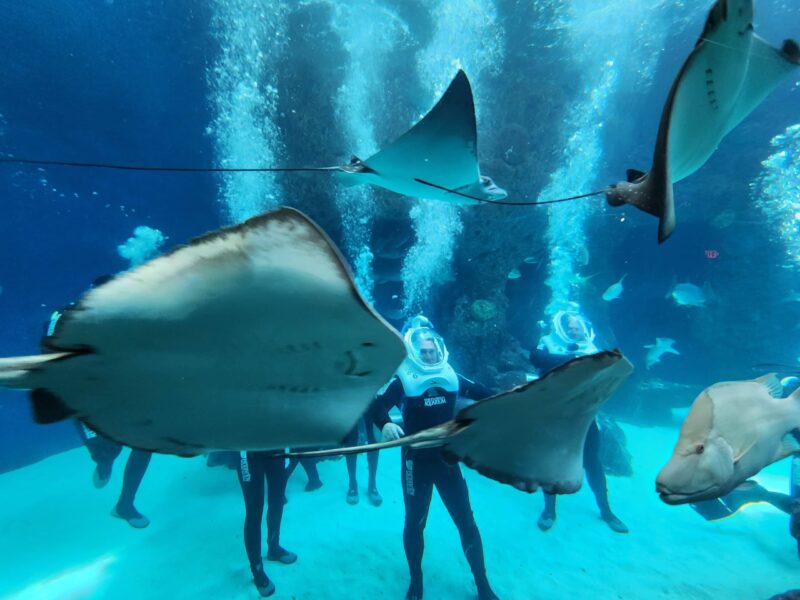
While the associated cost, equipment, traveling, physical exertion and learning curve prevent many people from navigating underwater marine habitats, a relatively new experience increases accessibility.
Tampa’s Florida Aquarium is now expanding its SeaTREK excursions, first launched in July 2022. The program is currently open on weekends, and visitors can descend into the Heart of the Sea habitat five times daily starting June 1.
The aquatic adventures’s design allows non-divers aged 10 or older to walk 15 feet below the surface. Once on the faux-sea floor, participants receive a guided tour through coral caves and an intimate look at bonnethead sharks, a loggerhead sea turtle, spotted eagle rays and hundreds of fish.
Matthew Shuttleworth, supervisor of dive training and assistant dive safety officer, said SeaTREK exemplifies the Aquarium’s conservation and education efforts.
“It immerses somebody in an experience in a world that they potentially have never been in before,” Shuttleworth said. “You don’t even have to swim to be able to do this.
“It exposes them to a great underwater world.”
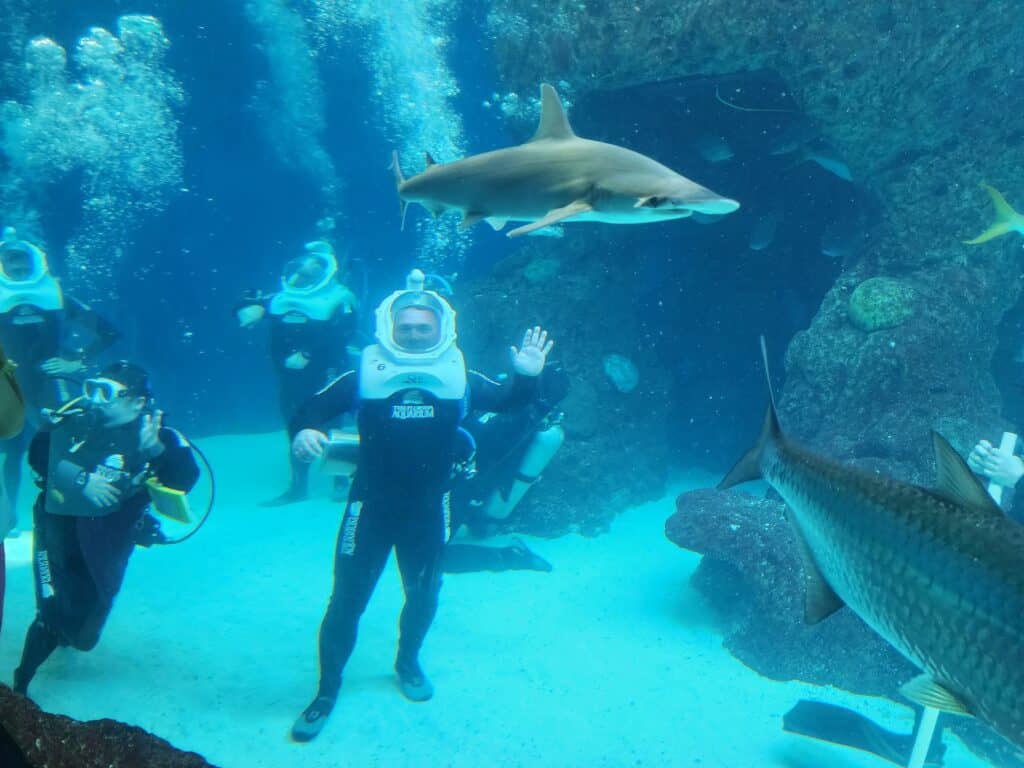
A bonnethead shark swims past the reporter (center).
The SeaTREK process takes about an hour, with 20 minutes spent inside the tank. For many, the time passes too quickly.
Participants change into wetsuits and walk to the top of the Heart of the Sea attraction, where they receive safety instructions. Aquarium staff strap an oxygen tank to their backs; this feeds fresh air into a large helmet.
A pulley system lowers the 70-pound – helmet resembling something an astronaut would wear – onto visitors’ heads. Underwater physics alleviates its weight, and there is no need to check oxygen levels.
Participants are slowly guided down a ladder and adjust their ears to a slight pressure increase. The helmets are easy to use and prevent water from ascending past your upper neck.
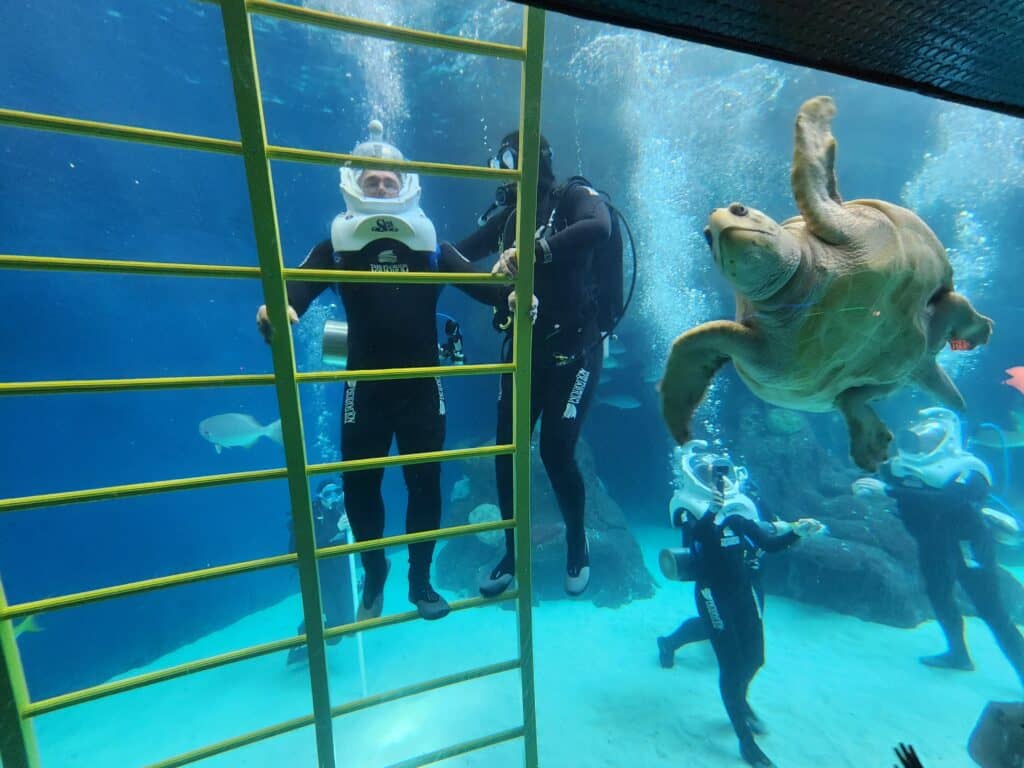
Sheldon is SeaTREK’s resident rescued loggerhead sea turtle.
Visitors and guides communicate via hand signals and a whiteboard, as you can’t hear each other underwater. During Friday’s media event, participants were mostly free to walk around and leisurely explore the tank.
While reaching out to touch the abundance of marine life is forbidden, the rescued sea turtle – Sheldon – and rays routinely gave their house guests curious looks and nudges. An Aquarium spokesperson called Sheldon’s personality “spicy.”
Although the bonnetheads kept a little more distance Friday, Shuttleworth noted the experience helps mitigate the online stigma that sharks and stingrays are “scary” and “dangerous” creatures.
“These animals are just living their lives,” he added. “When they are swimming all around, you can see how majestic and gentle they really are.”
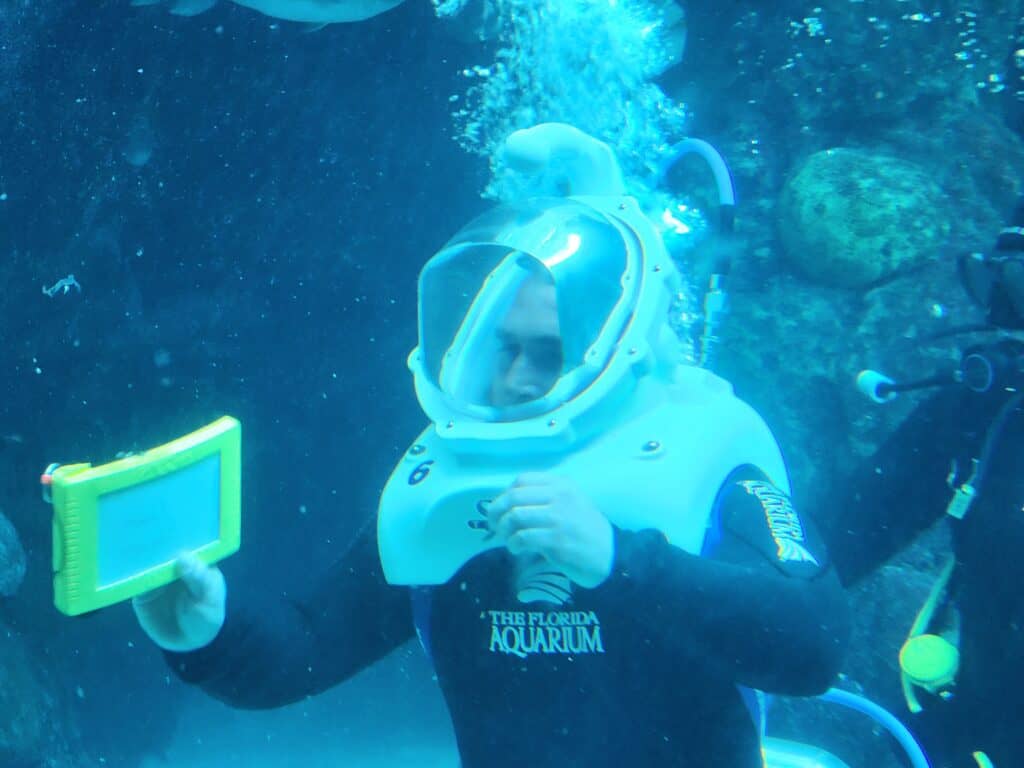
Participants communicate with guides via hand signals and a whiteboard. This message was a denied plea to touch the turtle.
Shuttleworth believes that the new perspective will cause people to think twice about polluting, and increase personal conservation efforts. He noted Sheldon had monofilament fishing line wrapped around his neck when rescued, and the turtle will no longer survive in the wild.
In addition to visitors from land-locked states, exploring underwater tropical habitats is out of reach for most underserved youth throughout Tampa Bay. “The SeaTREK program is our aim to break down personal and cultural barriers and provide a positive in-water experience that inspires conservation of our natural world,” Aquarium CEO Roger Germann said in a prepared statement.
Shuttleworth relayed that the Aquarium’s community engagement team offers a program for economically disadvantaged youth and communities. Groups visit the facility two or three times a month.
Young children gathered against the Heart of the Sea’s glass throughout the media excursion. They continuously smiled and waved, seemingly in awe of the animals and people exploring the habitat.
“They see someone like them down there, and they’re like, ‘Oh my God’ – and there sparks the conversation,” Shuttleworth said. “Just because today we have some VIPs in the water, this is a guest program for us. If you’re 10 years or older, we’ll get you in the water.”
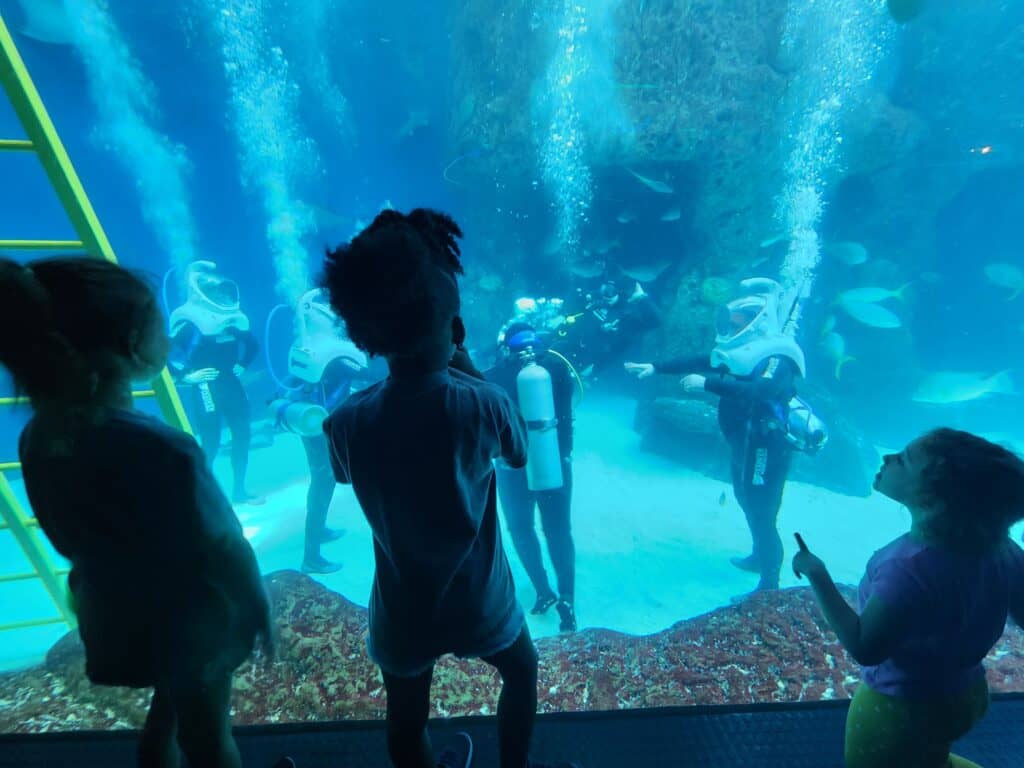
Kids were fascinated by the SeaTREK experience.
Tickets are $95 and include Aquarium admission. He noted the physical requirements are simply the ability to breathe and walk around. Officials also plan to increase accessibility among those with mobility challenges in the future.
However, Shuttleworth relayed that SeaTrek is ideal for people unable to swim like a SCUBA diver or receive the training necessary for dive certification.
“Like take your mask on and off and do emergency rescue drills and everything,” he added. “This is perfect because all you have to do is put your helmet on and go for a walk.”
The Aquarium permits small underwater cameras in the tank. However, the helmet distorts depth perception, and having someone take pictures from the viewing area would allow participants to focus on the experience.
View a video of the Florida Aquarium’s SeaTREK experience, courtesy of The Taste Buzz, below:







